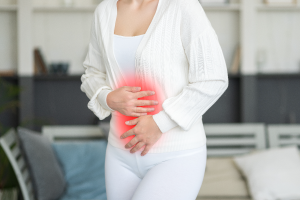

Cancer is the second most life-threatening disease after heart disease. It is caused by various gene mutations either at the time of birth or after birth. These mutations, at the time of birth, are genetic whereas those after birth are caused by radiation, smoking, obesity, lack of exercise, hormones, and carcinogens.
Carcinogens are common substances that result in cancer disease. Carcinogens examples include anything from tobacco and alcohol to engine exhaust, UV rays, and substances in processed meat. These exposures or substances may be found in the air you breathe, chemical ingredients of foods and drinks you consume, or in any product you use. This National Cancer Awareness Day, let us discuss all about what is carcinogen and its different types.
How Do Carcinogens Cause Cancer?
Carcinogens react with the DNA present in cells in the body. This results in an obtrusion in the optimal functioning of these cells. All of this further leads to the formation of abnormal growth called tumours in different tissues. These tumours also possess the ability to spread to other tissues in the body, scientifically known as metastasis.
This metastasis of tumours in the body causes disruption of normal function in the other parts as well, leading to organ damage followed by organ failure and even death.
Apart from carcinogens that cause alterations in DNA, there are carcinogens that cause non-genotoxic mechanisms. This means that the harm can also be caused without causing any direct gene damage.
What are the Various Categories of Carcinogens?
Based on their origin, carcinogens can be divided into three broad categories. These include:
- Environmental or Physical Carcinogens: As the name suggests, environmental carcinogens are those that are directly present in the environment. These include radiation from radioactive material or UV rays from the sun, and so on.
- Chemical or Biological Carcinogens: These are released into the environment because of various factors. Chemical carcinogens examples include pollution caused by cigarette smoke, exhaust fumes from cars as well as industrial by-products.
- Oncogenic/ Biological Carcinogens or Viruses: Oncogenic viruses are also carcinogenic which means that they are living organisms or rather microorganisms that may impose the risk of cancer. These viruses include Hepatitis B and hepatitis C virus, HPV (Human Papillomavirus), etc.
Common Carcinogens
There are various types of these cancer-causing agents. These include carcinogens in food, drinks, chemicals, processed products, environmental factors, and so on. Some of the most common types of carcinogens are:
1. Engine Exhaust Fumes
These fumes from vehicles like cars, trucks, and buses account for most of the pollution these days. The harmful substances like soot and gas may lead to an increase in the risk of lung cancer.
2. Tobacco
Carcinogens in tobacco are harmful, regardless of whether you are exposed to them via smoking or not. Most of the chemicals found in tobacco cause genetic damage, resulting in cancer. Even if you are exposed to secondhand smoke, carcinogens in cigarettes will have the same effect on you as that on a smoker.
3. Processed Meats
Addition of preservatives or artificial flavours to certain meats may lead to colon cancer. These meats include salami, sausages, bacon, or pepperoni. Limitation of salted, or smoked, and other processed foods is a way to avoid the risk of cancer and start living healthier.
4. Alcohol
Alcohol carcinogens are produced when beer, wine, or hard liquor are consumed. Cancers in organs like liver, breast, head and neck, oesophagus, and colon or rectum may be formed by consumption of high amounts of alcohol.
5. UV Rays
UV rays are exuded by the Sun or by welding and tanning devices. Prolonged exposure to these rays may result in various types of skin or eye cancer.
6. Viruses
Viruses attack the gene mutation of healthy cells present in the body. This further increases the risk of certain types of cancer. Some viruses that have high risk of cancer include Hepatitis B and Hepatitis C, HIV (Human Immunodeficiency Virus), HPV (Human Papillomaviruses), HTLV-1 (Human t-lymphocyte Virus Type 1), and so on.
7. Medication
Some medicines used for hormonal therapy or chemotherapy may impose the risk of cancer. Some oral contraceptives may lower the risk of a certain type of cancer but may increase the risk for another type.
8. Overcooked Foods
At high temperatures, when cooked well, most food items adopt a tan colour. There is no need for you to cook them further till they get a darker golden or brown colour, often found in the crispy parts. In conditions when food is cooked till it attains a darker colour, it may release a chemical called acrylamide. Acrylamide carcinogens cause the risk of cancer disease.
9. Formaldehyde
Carcinogenic chemicals cause harm in terms of increasing the risk of cancer. Formaldehyde is one of them and is often found in products made out of wood. So, before you buy furniture for your home or office next time, ensure that you maintain low humidity levels. This will help you diminish the effects of the chemical.
Safety Precautions to Avoid Carcinogens
You need to know how to distinguish between carcinogenic and non carcinogenic substances. You can adopt the following points in order to achieve the same:
- Adopt a healthy lifestyle that involves consumption of enough water and a healthy, well-balanced meal; avoid drinking and smoking at all costs.
- Wear an anti-pollution mask to avoid the risk of inhaling harmful fumes.
- You can ensure that your home or office is free from humidity to avoid the risk imposed by carcinogenic chemicals
- Do not ignore the list of ingredients mentioned on a product and choose the ones with familiar ingredients.
Conclusion
You cannot completely ward off the risk of cancer in any way but you can surely take some preventive measures like eating healthy, taking care of yourself, avoiding harmful substances, and many other points discussed above. So, take a pledge to adopt a healthy lifestyle with us this National Cancer Awareness Day!




